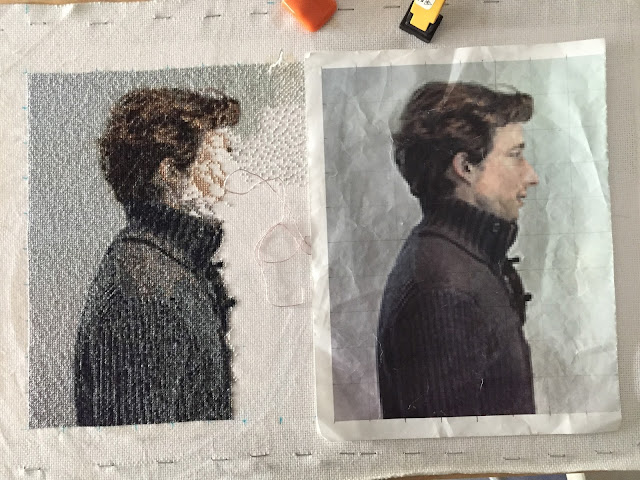| Read this book. |
And I think the share I have to share first is (from pages 64 & 65):
Excerpted from Art As Therapy, Alain de Botton & John Armstrong. Phaidon. pgs. 64, 65.
What, then, are the consequences of holding to a therapeutic vision of art? Principally, the conviction that the main point of engaging with art is toe help us lead better lives - to access better versions of ourselves. If art has such a power, it is because it is a tool that can correct or compensate for a range of psychological frailties....
1 A CORRECTIVE OF BAD MEMORY Art makes memorable and renewable the fruits of experience. It is a mechanism to keep precious things, and our best insights, in good condition and makes them publicly accessible. Art banks our collective winnings.
2 A PURVEYOR OF HOPE Art keeps pleasant and cheering things in view. it knows we despair too easily.
3 A SOURCE OF DIGNIFIED SORROW Art reminds us of the legitimate place of sorrow in a good life, so that we panic less about our difficulties and recognize them as parts of a noble existence.
4 A BALANCING AGENT Art encodes with unusual clarity the essence of our good qualities and holds them up before us, in a variety of media, to help rebalance our natures and direct us towards our best possibilities.
5 A GUIDE TO SELF-KNOWLEDGE Art can help us identify what is central to ourselves, but hard to put into words. Much that is human is not readily available in language We can hold up art objects and say, confusedly but importantly, 'This is me.'
6 A GUIDE TO THE EXTENSION OF EXPERIENCE Art is an immensely sophisticated accumulation of the experiences of others, presented to us in well-shaped and well-organized forms. It can provide us with some of the most eloquent instances of the voices of other cultures so that an engagement with artworks stretches our notions of ourselves and our world. At first, much of art seems merely 'other', but we can discover that it can contain ideas and attitudes that we can make our own in ways that enrich us. Not everything we need to become better versions of ourselves is already [at hand].
7 A RE-SENSITIZATION TOOL Art peels away our shell and saves us from our spoilt, habitual disregard for what is all around us. We recover our sensitivity; we look at the old in new ways. We are prevented from assuming that novelty and glamour are the only solutions.
Excerpted from Art As Therapy, Alain de Botton & John Armstrong. Phaidon. pgs. 64, 65.

























